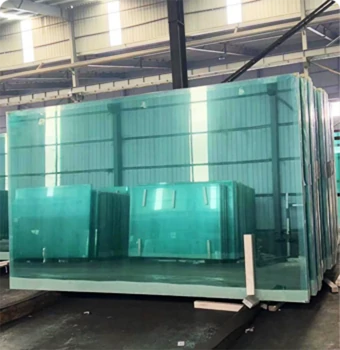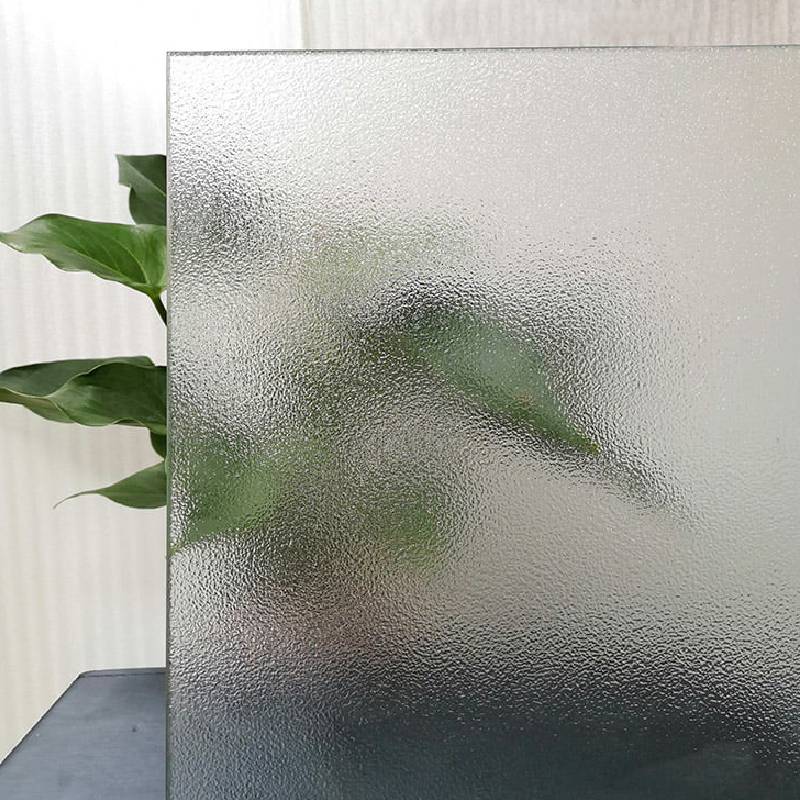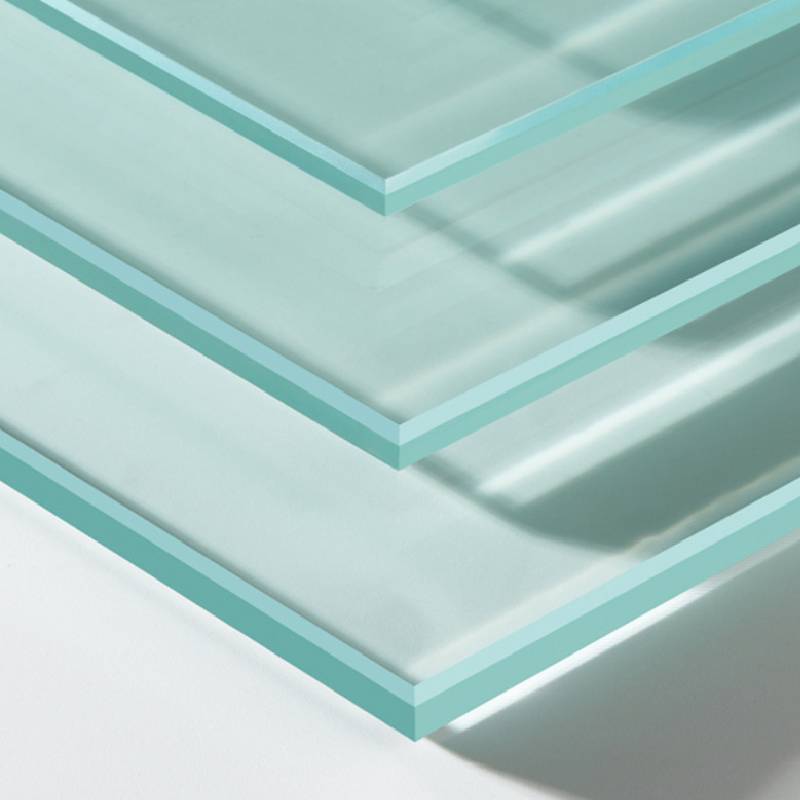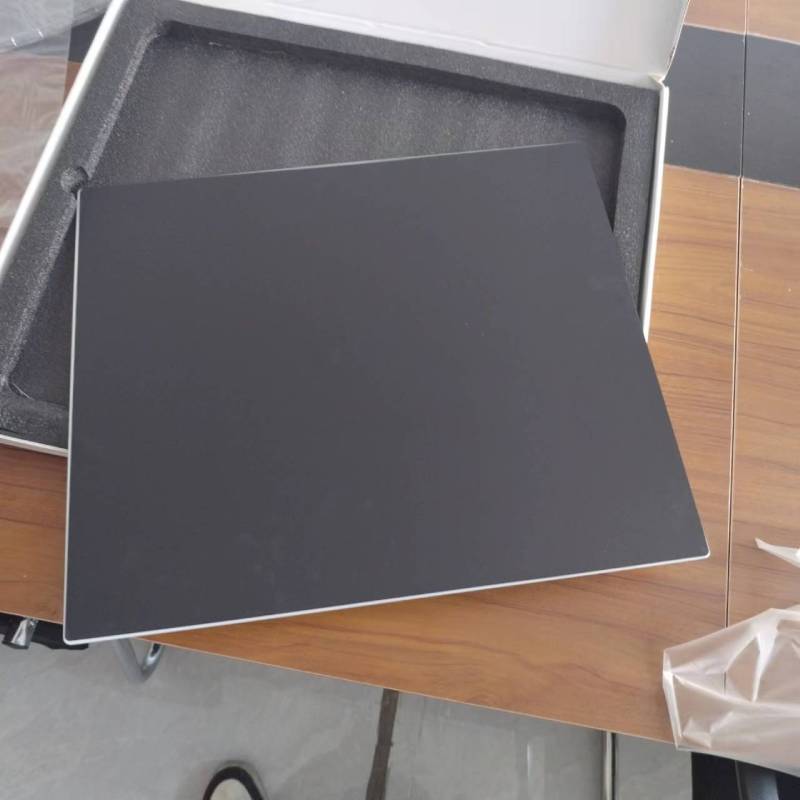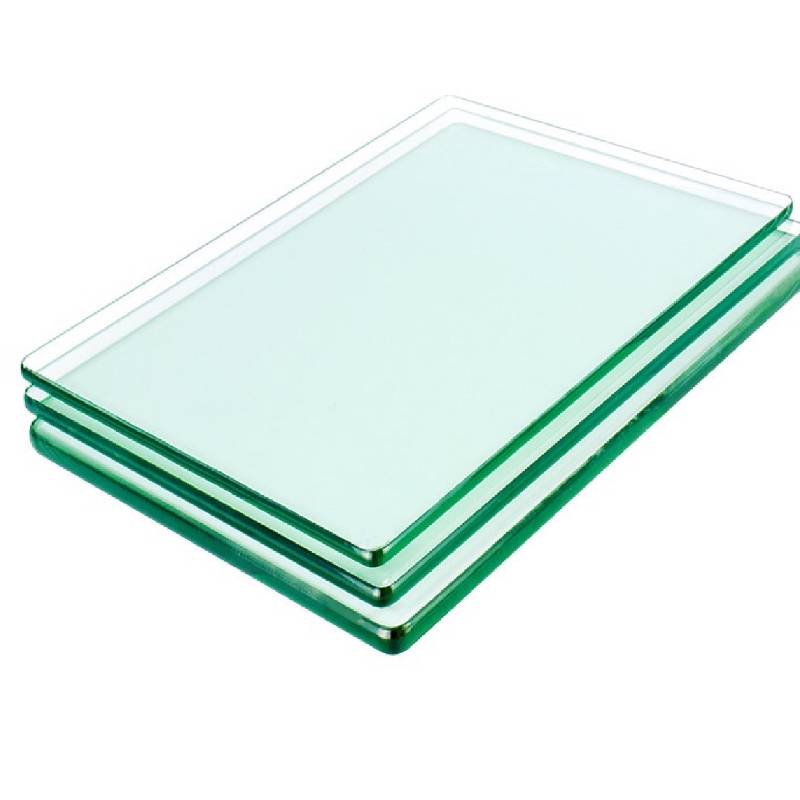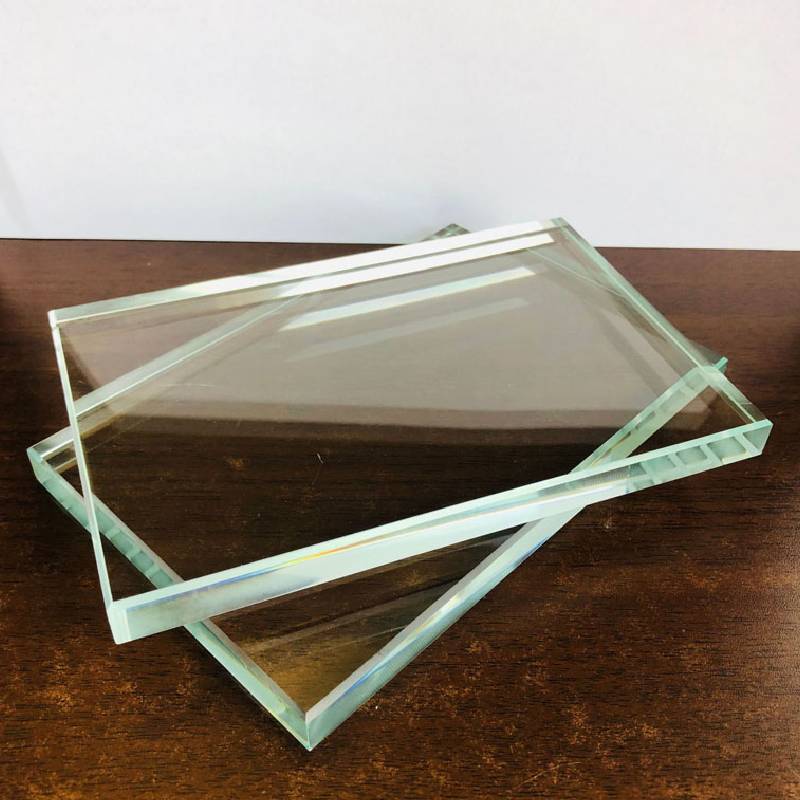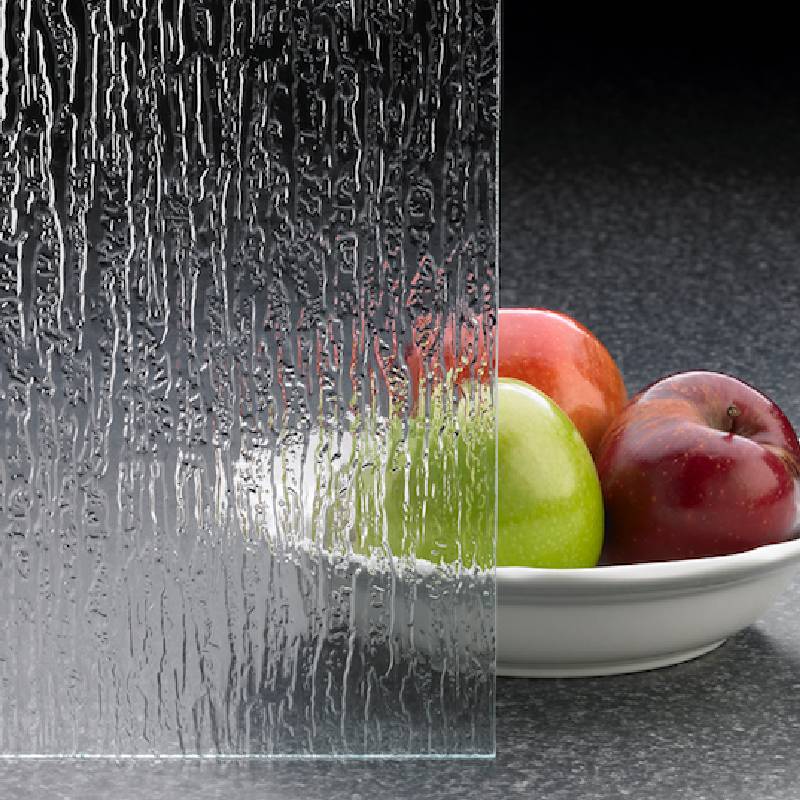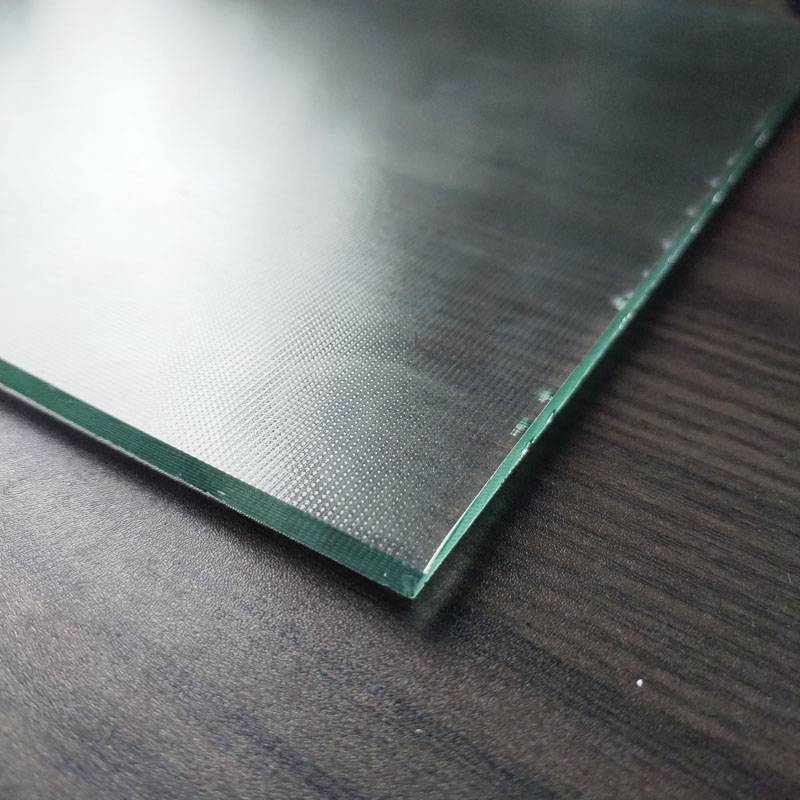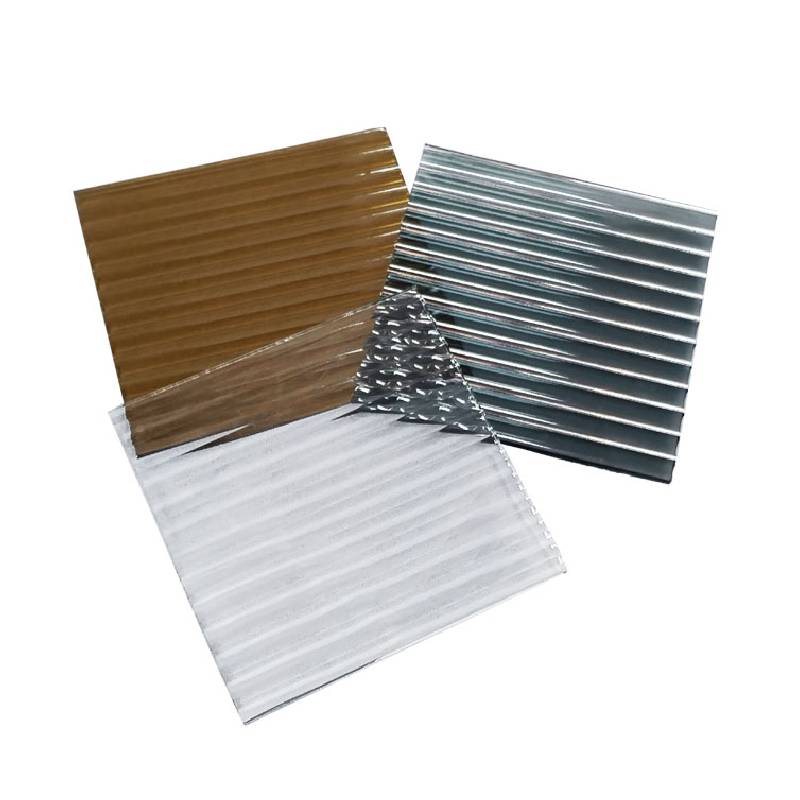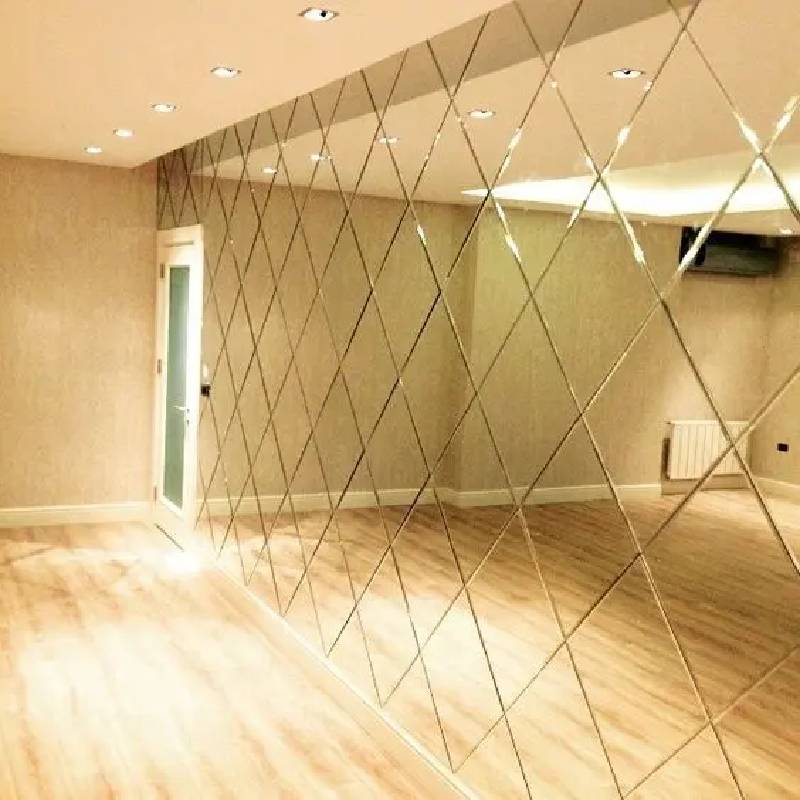Float glass means that the raw materials are melted at high temperature in the furnace. The molten glass continuously flows from the furnace and floats on the surface of the relatively dense tin liquid. Under the action of gravity and surface tension, the glass liquid spreads on the tin liquid surface. It is opened, flattened, and the upper and lower surfaces are formed to be smooth, hardened, and cooled before being led to the transition roller table. The rollers on the roller table rotate, pulling the glass ribbon out of the tin bath and into the annealing kiln. After annealing and cutting, flat glass products are obtained. The biggest feature of float glass is that its surface is hard, smooth, and flat. Especially when viewed from the side, the color is different from ordinary glass. It is white and the object is not distorted after reflection. In addition, due to the relatively good thickness uniformity, the transparency of its products is also relatively strong. It is precisely because of this transparency that it has a wider field of view. The broad field of view allows float glass to be used in many fields.
The production process of float glass is completed in a tin bath where protective gas (N2 and H2) is introduced. Molten glass continuously flows from the tank kiln and floats on the surface of the relatively dense tin liquid. Under the action of gravity and surface tension, the molten glass spreads and flattens on the tin liquid surface, forming an upper and lower surface that is smooth, hardened, and cooled. Then he was led to the transition roller table. The rollers on the roller table rotate, pulling the glass ribbon out of the tin bath and into the annealing kiln. After annealing and cutting, flat glass products are obtained. Compared with other forming methods, the advantages of float method are: it is suitable for high-efficiency manufacturing of high-quality flat glass, such as no corrugation, uniform thickness, smooth upper and lower surfaces, and parallel to each other; the scale of the production line is not limited by the forming method, and the energy per unit product Low consumption; high utilization rate of finished products; easy to scientifically manage and realize full-line mechanization and automation, high labor productivity; continuous operation cycle can last for several years, which is conducive to stable production; can provide suitable conditions for online production of some new varieties, such as Electric float reflective glass, spray film glass during annealing, cold end surface treatment, etc.
Float glass is widely used and is divided into tinted glass, float silver mirror, float white glass, etc. Among them, ultra-white float glass has a wide range of uses and broad market prospects. It is mainly used in the fields of high-end buildings, high-end glass processing and solar photovoltaic curtain walls, as well as high-end glass furniture, decorative glass, imitation crystal products, lighting glass, precision electronics industries, Special buildings, etc. Float glass has relatively good thickness uniformity and relatively strong transparency. Therefore, after tin surface treatment, it is relatively smooth. Under the action of smoothing, flame and polishing, it forms a surface that is relatively neat and flat. Glass with better strength and stronger optical properties. This kind of float glass has the characteristics of good transparency, brightness, purity, and bright indoor light. It is also the best choice for building doors, windows, and natural lighting materials. It is also one of the most widely used building materials. one.
The history of float glass can be traced back to the late 1950s. The British Pilkington Glass Company announced to the world that it had successfully developed the float forming process for flat glass. This was a revolution in the original grooved top forming process. However, the Western technology blockade at that time made China's float glass development and production have to take the path of self-reliance and independent innovation. In May 1971, the former Ministry of Building Materials Industry decided to conduct float process industrial trials in Luobo. Glass experts from all over the country gathered in Luobo, and more than a thousand employees of Luobo participated in the war. On September 23, 1971, under the guidance of department leaders and relevant experts, and with the full cooperation of fraternal units, the cadres and workers of Luoyang University worked together for more than three months and finally successfully built the first float. The glass production line produced my country's first float glass. From 1971 to 1981, CLFG implemented large-scale technical transformation on this line three times. The melting capacity of the production line reached 225 tons, the plate width exceeded 2 meters, and the overall yield reached 76.96%. At the end of 1978, In early 1979, thinner 4 mm glass was stably produced. The technology and equipment of "Luoyang Float Glass Process" were also improved day by day, and the technical level was continuously improved.
Ưu điểm của kính nổi chủ yếu thể hiện ở các khía cạnh sau: thứ nhất, nó có độ phẳng tốt và không có gợn nước; thứ hai, cát thạch anh quặng được chọn có nguyên liệu tốt; thứ ba, thủy tinh được sản xuất là tinh khiết và có độ trong suốt tốt; Cuối cùng, cấu trúc Nhỏ gọn, nặng, mịn khi chạm vào, nặng hơn một tấm phẳng trên một mét vuông có cùng độ dày, dễ cắt và không dễ gãy. Những ưu điểm này làm cho kính nổi được sử dụng rộng rãi trong xây dựng, ô tô, trang trí, nội thất, công nghệ thông tin và các ngành công nghiệp khác.
- Độ dày của kính nổi
Độ dày thông thường 3 mm, 4 mm, 5,5 mm, 6 mm, 8 mm, 10 mm, 12 mm
Siêu mỏng 1.2mm, 1.3mm, 1.5mm, 1.8mm, 2mm, 2.3mm, 2.5mm
Cực dày 15mm, 19mm
Kích thước 1220*1830mm, 915*2440mm, 915*1220mm, 1524*3300mm, 2140*3300mm, 2140*3660mm, 2250*3300mm, 2440*3660mm
 Người châu Phi
Người châu Phi  Tiếng Albania
Tiếng Albania  tiếng Amharic
tiếng Amharic  tiếng Ả Rập
tiếng Ả Rập  tiếng Armenia
tiếng Armenia  Tiếng Azerbaijan
Tiếng Azerbaijan  Tiếng Basque
Tiếng Basque  Người Belarus
Người Belarus  tiếng Bengali
tiếng Bengali  tiếng Bosnia
tiếng Bosnia  tiếng Bungari
tiếng Bungari  tiếng Catalan
tiếng Catalan  Cebuano
Cebuano  Corsican
Corsican  tiếng Croatia
tiếng Croatia  tiếng Séc
tiếng Séc  người Đan Mạch
người Đan Mạch  tiếng Hà Lan
tiếng Hà Lan  Tiếng Anh
Tiếng Anh  Quốc tế ngữ
Quốc tế ngữ  tiếng Estonia
tiếng Estonia  tiếng Phần Lan
tiếng Phần Lan  người Pháp
người Pháp  tiếng Frisia
tiếng Frisia  tiếng Galicia
tiếng Galicia  tiếng Gruzia
tiếng Gruzia  tiếng Đức
tiếng Đức  người Hy Lạp
người Hy Lạp  Gujarati
Gujarati  Tiếng Creole Haiti
Tiếng Creole Haiti  hausa
hausa  người hawaii
người hawaii  tiếng Do Thái
tiếng Do Thái  Không
Không  Miêu
Miêu  người Hungary
người Hungary  tiếng Iceland
tiếng Iceland  igbo
igbo  tiếng Indonesia
tiếng Indonesia  người Ailen
người Ailen  người Ý
người Ý  tiếng Nhật
tiếng Nhật  tiếng Java
tiếng Java  tiếng Kannada
tiếng Kannada  tiếng Kazakhstan
tiếng Kazakhstan  tiếng Khmer
tiếng Khmer  người Rwanda
người Rwanda  Hàn Quốc
Hàn Quốc  người Kurd
người Kurd  Tiếng Kyrgyzstan
Tiếng Kyrgyzstan  Lao
Lao  Latin
Latin  tiếng Latvia
tiếng Latvia  tiếng Litva
tiếng Litva  Tiếng Luxembourg
Tiếng Luxembourg  Tiếng Macedonia
Tiếng Macedonia  Malgashi
Malgashi  Mã Lai
Mã Lai  Mã Lai
Mã Lai  cây nho
cây nho  người Maori
người Maori  Tiếng Marathi
Tiếng Marathi  tiếng Mông Cổ
tiếng Mông Cổ  Myanmar
Myanmar  tiếng Nepal
tiếng Nepal  người Na Uy
người Na Uy  người Na Uy
người Na Uy  tiếng Occitan
tiếng Occitan  Tiếng Pa-tô
Tiếng Pa-tô  tiếng Ba Tư
tiếng Ba Tư  Đánh bóng
Đánh bóng  tiếng Bồ Đào Nha
tiếng Bồ Đào Nha  Tiếng Punjab
Tiếng Punjab  người Rumani
người Rumani  tiếng Nga
tiếng Nga  Tiếng Samoa
Tiếng Samoa  Tiếng Gaelic của Scotland
Tiếng Gaelic của Scotland  tiếng Serbia
tiếng Serbia  Tiếng Anh
Tiếng Anh  Shona
Shona  tiếng Sindhi
tiếng Sindhi  Sinhala
Sinhala  Tiếng Slovak
Tiếng Slovak  tiếng Slovenia
tiếng Slovenia  tiếng Somali
tiếng Somali  người Tây Ban Nha
người Tây Ban Nha  Tiếng Sundan
Tiếng Sundan  tiếng Swahili
tiếng Swahili  tiếng Thụy Điển
tiếng Thụy Điển  Tagalog
Tagalog  Tiếng Tajik
Tiếng Tajik  Tiếng Tamil
Tiếng Tamil  Tatar
Tatar  tiếng Telugu
tiếng Telugu  tiếng Thái
tiếng Thái  tiếng Thổ Nhĩ Kỳ
tiếng Thổ Nhĩ Kỳ  người Thổ Nhĩ Kỳ
người Thổ Nhĩ Kỳ  tiếng Ukraina
tiếng Ukraina  tiếng Urdu
tiếng Urdu  người Duy Ngô Nhĩ
người Duy Ngô Nhĩ  tiếng Uzbek
tiếng Uzbek  Tiếng Việt
Tiếng Việt  người xứ Wales
người xứ Wales  Giúp đỡ
Giúp đỡ  tiếng Yiddish
tiếng Yiddish  Yoruba
Yoruba  Tiếng Zulu
Tiếng Zulu 

